
Facts about alpacas
Total fiber output
3 - 6 kilo per animal / year;
of which usable: 1 - 3 kilo
Body weight
Mare: approx. 55 kg
Stallion: approx. 60 - 80 kg
Nutrition
1-2 kilograms of grass per day
Stock
3.5 million alpacas in Peru
(=80% of the animals worldwide)
Stock in Germany
approx. 12,000 - 15,000 animals
Height at withers
75 - 100 cm
Life expectancy
20-25 years
Shearing
1 time per year
Stock in Austria
approx. 3,000 - 5,000 animals
Stock in Switzerland
approx. 2,000 animals
The history of alpaca
Alpacas are noble and generous animals, legendary and sensitive. In Peru, they are also a national symbol dating back to 5000 B.C. The domestication of alpacas and llamas began as early as 3000 B.C. While the llama served South American civilizations primarily as a beast of burden, the alpaca was bred for its wool. Among the Incas, an alpaca coat was considered a sign of prosperity. However, the large alpaca herds of that time became smaller and smaller with the conquest of Peru by the Spanish, because the Europeans brought sheep and showed no interest in the native animals. Thus, the alpaca gradually became the farm animal of the poor Indian population, until in the meantime it was almost extinct. It was not until the independence of the South American states that the value of the alpaca was again recognized. Breeding was resumed and the wool was exported all over the world.
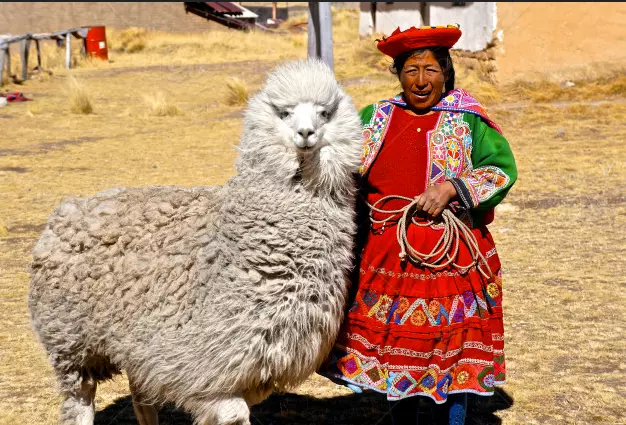
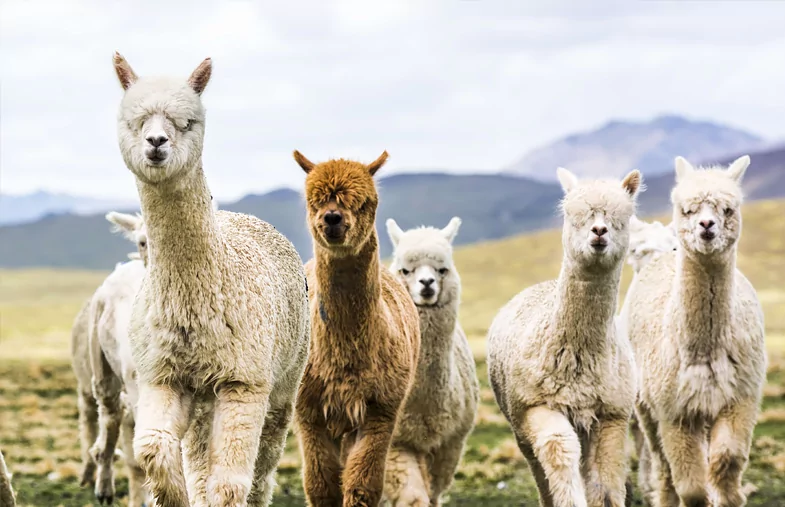
The alpaca is back!
Today there are about 3.5 million alpacas in Peru alone, mainly in southern Peru, western Bolivia, and Chile. But alpacas can also increasingly be admired on Europe's pastures. The exotic animals, which are kept partly as a hobby and partly for breeding, always attract curious glances.
Currently, 80% of the world's population of this camelid live in the Andes of Peru, where more than four million alpacas live. Each of these alpacas represents the work and progress of thousands of Peruvians who live far from the modern world. For them, alpaca breeding means preserving a remnant of ancient history. For us, it means keeping history alive and making every day our raison d'être.
The name of the animal in Quechua is allpaka, paqo, or paqocha. Forms that also occur in the other living language, Aymara. Paqo is also used for a specific color of the alpaca, a dark brown color with a reddish tint considered the original color of all alpacas and even other camelids.
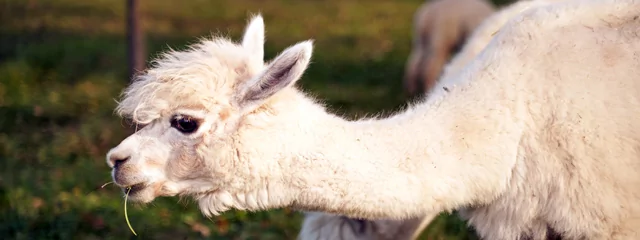
Interesting things about alpacas
- Alpacas belong to the family of cloven-hoofed animals. Within the genus, there are also two wild species, the guanacos and the vicuñas.
- However, as a bred species of camel, alpacas also inhabit other regions, such as grasslands, steppes, or semi-deserts.
- The cold altitudes do not bother the alpacas, because they have dense fur with a distinctive and fine undercoat.
- Depending on the appearance of the coat, a distinction is made between two species: The Huacaya alpacas and the much rarer Suri alpacas.
- Along with silk and cashmere, the animals' wool is one of the world's most coveted and precious fabrics and is known in South America as the fleece of the gods.
- Alpacas climb steep mountain slopes without any problems because, as calloused soles, they have thick and soft sole pads under their hooves that support them.
- They make hardly any food demands; in the warm summer months, they eat only fresh grass, in winter hay.
- Alpacas are also very easy to keep. They are very social animals that like to live together in large groups and should be kept in large groups as well.
- After a gestation period of over eleven months, the cow gives birth to only one foal, which can walk within a few hours after birth. After only a few weeks, the dam is ready to mate again.
- Alpacas are extremely peaceful, good-natured, and people-friendly animals that are used in therapy in many European countries.
- Alpacas are also used in therapy for addicted and disabled people. A great example is the Maria Ebene Foundation.
- These very robust animals are perfectly adapted to the extreme temperature differences of their homeland.
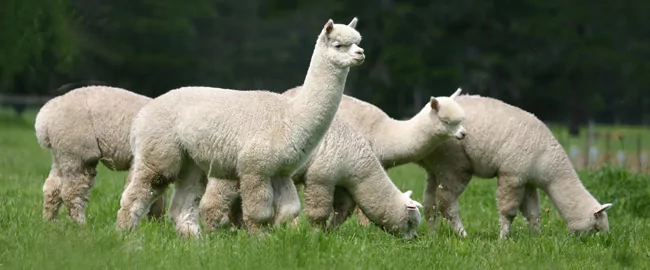
An alpaca is a very environmentally friendly animal because it does not pull the grass it eats by the root, but cuts it, which makes the grass grow back faster. It also doesn't have hooves, but small cushions on its feet, so it doesn't crush the grass underneath it. It also doesn't need much maintenance. The resources needed to care for the animal are therefore very small.
Character & Biology
Alpacas are friendly and good-natured creatures. They are curious and affectionate. Alpacas converse with each other using bright buzzing sounds. Their big black eyes, their nature, and their graceful humming make them so indescribably lovable. Alpacas today live mainly in the high mountains of the Peruvian Andes. They are herbivores and feed almost exclusively on grasses. Like all camels, alpacas are social animals and feel most comfortable in groups.
Alpacas belong to the New World camelid family, its cousin is the llama, but contrary to many common beliefs, they are very different. An alpaca is smaller and thinner than a llama, it has more pointed ears and is softer. It is also hairier on the forehead and has a smaller neck than a llama. They vary in height from 80 to 90 cm. Their heads are small and round, with tiny ears, large eyes, and a sweet expression. The back is slightly arched and the tail hangs close to the hindquarters. They have a gently rounded profile with a wide body, which is more noticeable from behind, and short legs. The live weight is between 75-85 kg.
An alpaca also has a different temperament than a llama. It does not spit, only when it is really annoyed or harassed. It is a very calm and relaxed animal. It is less arrogant, shyer, and more intelligent. Llamas are mainly used as transportation animals, while alpacas are mainly kept for their wool. Alpacas do not make noise and move very gracefully, which makes them very pleasant to handle.
The animals provide income for thousands of families in the Andes because they are the only animal that produces valuable fibers in more than twenty different natural shades (up to 60 color shades). The spectrum ranges from pure white to black, including various shades of brown and gray. In addition to the variety of colors, the fiber's high product quality is due to the long acclimatization process of the animals in the Andes. To withstand extreme temperature changes, the alpacas developed a fine, lightweight fleece that is water repellent and sun resistant. No other natural and noble fiber has such a combination of quality.
Alpaca shearing is deeply rooted in Peruvian culture, for the well-being of this peaceful and cherished animal. Alpacas are generally tame animals that can be sheared with ease (with some experience). They do need to be sheared regularly. This is because while llamas shed their fur on their own, alpacas keep theirs until it is sheared. If they were not sheared regularly, the fur would become matted, and too long, and pathogens and parasites would infest the animals, ultimately killing them.

Species of new world camelids
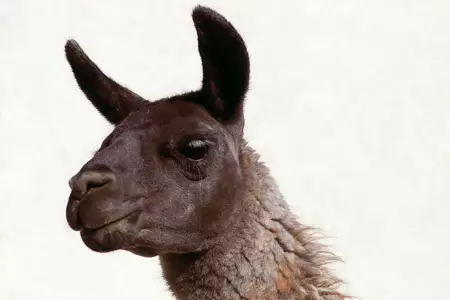
Llama
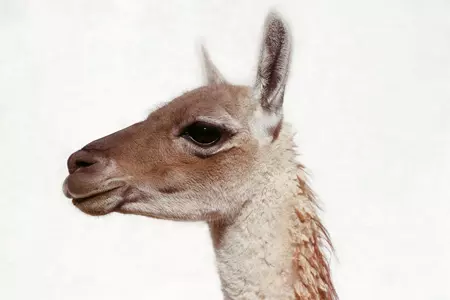
Guanaco
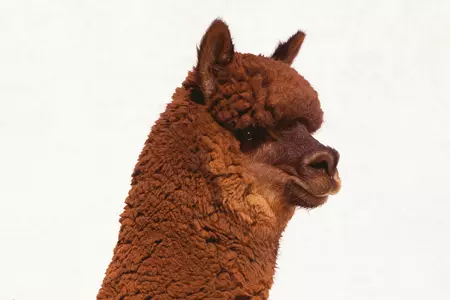
Alpaca
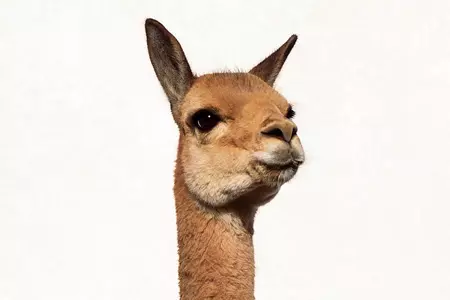
Vicuna
Vicuna
The vicuna (also vicuña) is the most graceful and rarest of the four New World camelids. With a fiber fineness of 11 to 12 microns, it has the finest animal fiber in the world; cashmere is comparatively coarse at 15 to 17 microns. In Inca times, clothing made from vicuña fibers was reserved for the nobility. The most beautiful of the South American camels, this wonderful animal served as the most valuable raw material for the ancient weavers of the Andes, from which they made wonderful clothes for the Inca kings. By the 1960s, however, the vicuña was on the brink of extinction. Thanks to a CITES rescue program, Peru alone now counts a population of around 160,000 animals again, living in the wilderness of the high Andes at 4000 meters above sea level. The delicate vicuñas are carefully sheared in a respectful, traditional ceremony. They are then released back into the wild. Selected pieces made from exclusive luxury fiber are available in the alpaca online store.
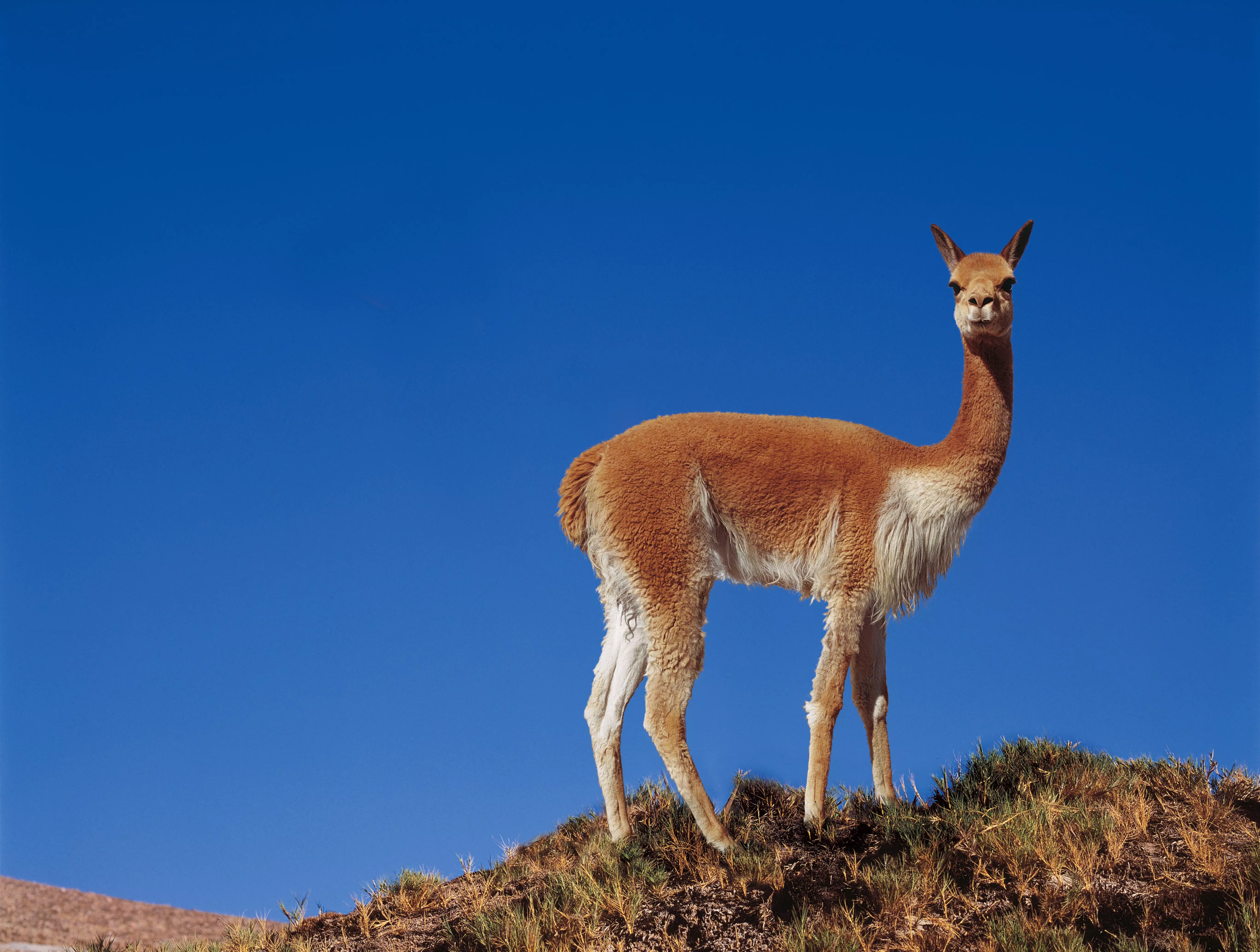
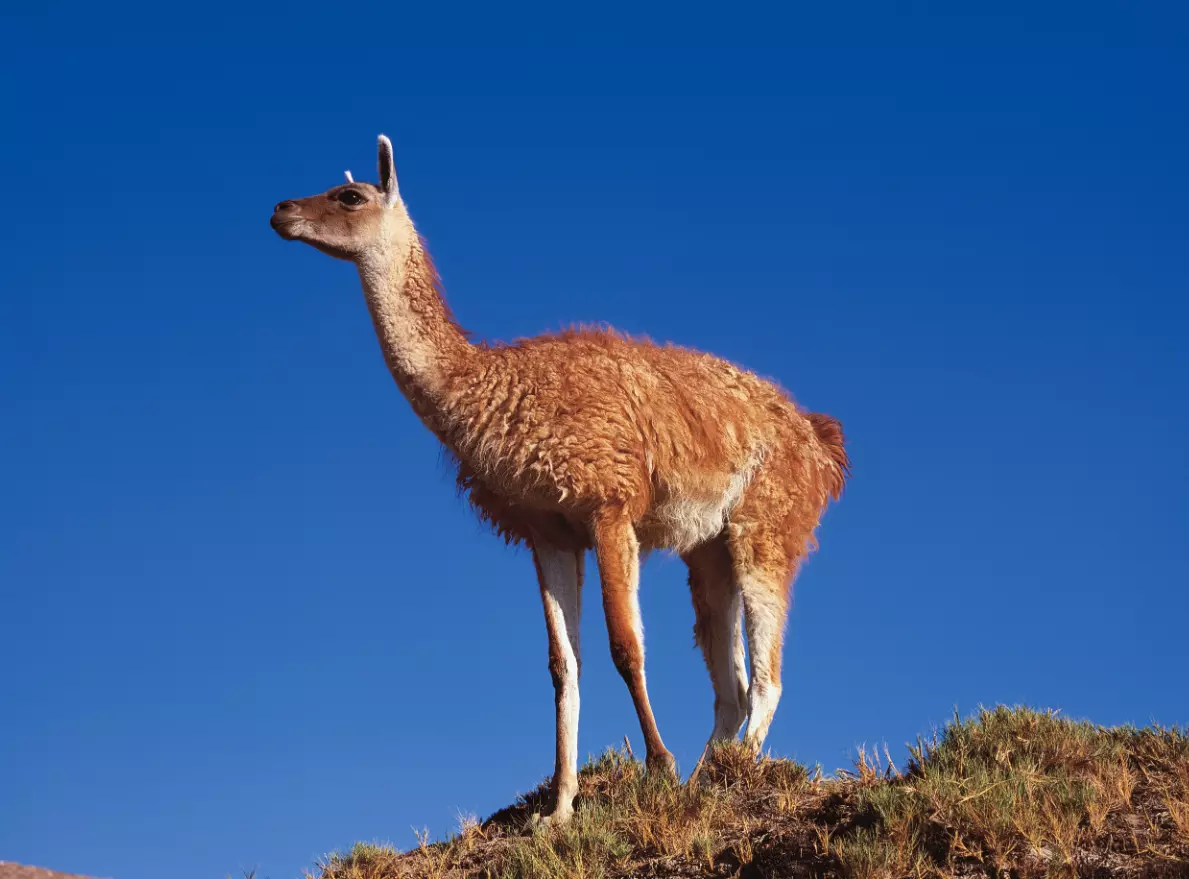
Guanaco
In contrast to its strong figure and rough beauty, the guanaco produces a very fine fiber of delicate cinnamon color. A warm and silky raw material, like the vicuña, it is obtained by the traditional shearing method of chaccu and is thus linked to the evolution of the Andean people.
Guanacos are the second largest of the South American camelids. Today, unfortunately, guanacos are threatened with extinction and are on the watch list of conservation organizations. In the last centuries, guanacos were hunted for their beautiful fur. Today there are about 500,000 of this species left. This corresponds to about one percent of the original population. However, there is still no international protection for this endangered animal.
Products made from guanaco fiber can only be purchased with a CITES certificate (Convention on International Trade in Endangered Species of Wild Fauna and Flora). This certificate guarantees that the animals are released into the wild after they have been shorn.
Llama
The llama is the largest of the New World camelids and has its natural habitat mainly in the Andes of Peru and Bolivia. During the Inca era, these animals played an extremely important role in the life of the Andean people. The llamas were the main means of transportation in the Andes and their meat was valued everywhere. In the textile industry, llama fleece is used less frequently than alpaca fleece. The processed fibers are then used for high-quality pile fabric, such as coats and light blankets.
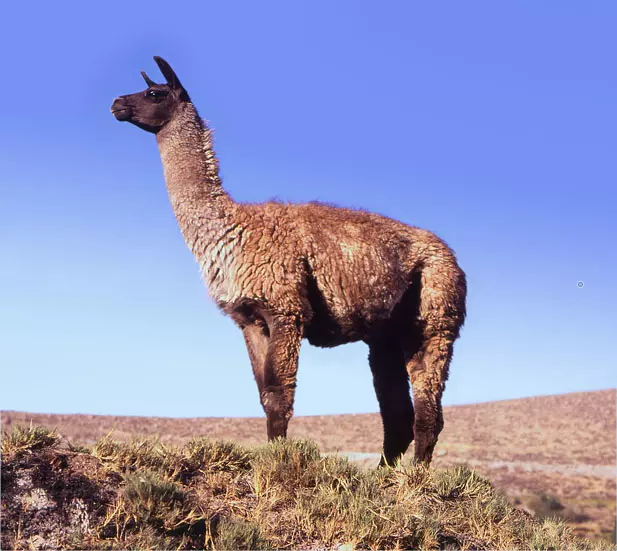
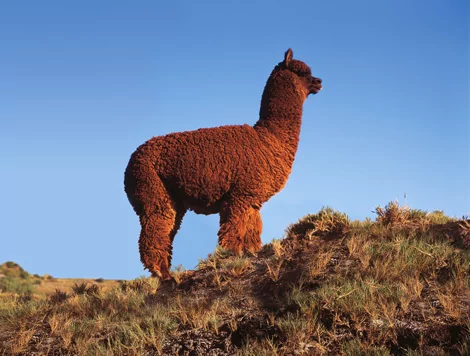
Alpaca
This species of camel, native to the Peruvian Andes, has the fiber with the greatest natural color variety available in the world of weaving. The natural colors range from white to brown and gray to black. Alpacas can be divided into 2 subspecies: Suri & Huacaya. Also to be mentioned is the BLACK ALPAKA.
Peru is the country with the highest number of black alpacas. However, the number of pure black alpacas in Peru has decreased in recent years to less than 0.07% of the total population of these animals in the country. This is equivalent to about 5,000 animals. Black alpacas are currently threatened with extinction. KUNA's BLACK ALPAKA collection symbolizes Grupo Inca's efforts to preserve pure black alpacas. Thanks to PACOMARCA, KUNA owns the largest existing group of these animals. They are studied, cared for, and propagated to promote their breeding in the rest of the country.
Suri Alpaca
The Suri breed, the result of thousands of years of domestication by the high Andean herders, accounts for only 6% of the total population of alpacas. The Suri is slightly smaller and slimmer than the Huacaya. The smooth fiber of Suri alpacas grows parallel to the body and hangs in long, single braids on the body. Its elegant style, the noble sheen of the fiber, and the graceful appearance of the Suri contrast with the more soft, woolly-looking Huacaya alpacas. Suri fiber is particularly suitable for making coats.
Baby alpaca Suri is the crowning glory of the alpaca fiber selection, as only 0.5% of the total alpaca fibers processed correspond to this noble input.

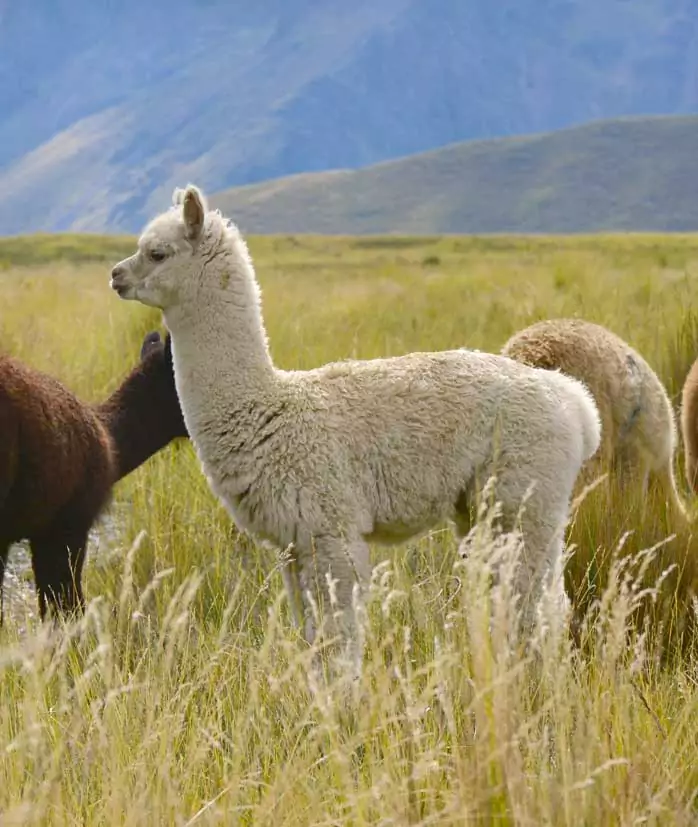
Huacaya Alpaca
The most common is the Huacaya. It accounts for about 90% of the total alpaca population. Its straight, dense, crimped hair distinguishes it from the Suri alpaca with its silky and wavy coat. Because huacaya fiber can be used to make almost any knitted or felted product, the huacaya is a real all-rounder and very popular with breeders.
Huacaya and Suri Alpaca in comparison
Huacaya
- approx. 90% of the total stock
- larger & wider
- appears soft, woolly, and crimped
- fiber grows straight and close to the body
- "allrounder" among the camelids
- can be used for almost any knitted/felted product
- very popular with breeders
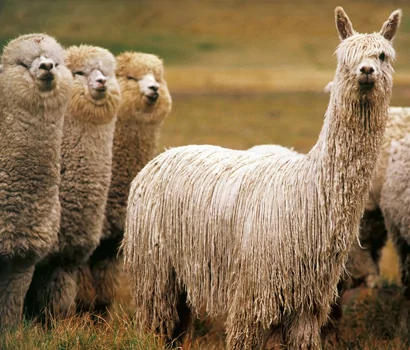
Suri
- approx. 6% of the total stock
- smaller & slimmer
- fiber grows parallel to the body
- hangs in long, single braids on the body
- elegant style, the noble sheen of the fiber
- graceful appearance
- especially suitable for the production of coats

 English
English  Deutsch
Deutsch Français
Français